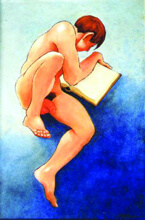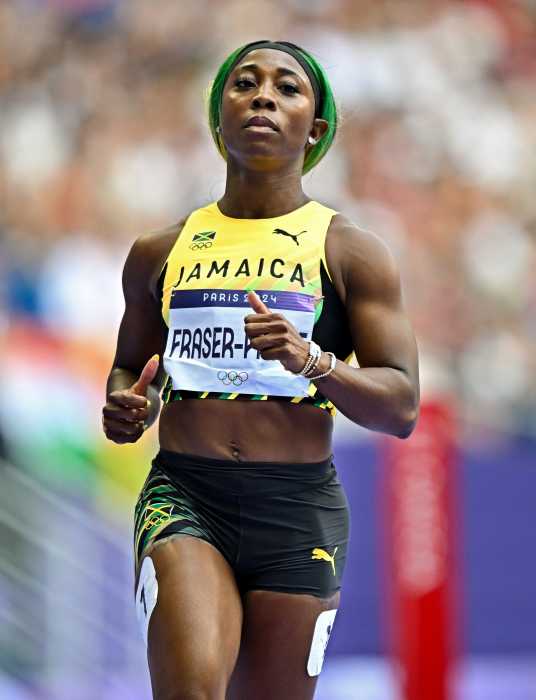Delayed by Katrina, J.B. Harter retrospective launches gay art gallery’s new home
The Culture of Queer:
A tribute to J.B. Harter
Leslie/Lohman Gay Art Foundation
26 Wooster St. at Grand St.
Tue.-Sat. 12-6 p.m.
Through Jul. 1
212-431-2609
The opening show at the new 4,000 square foot Leslie/Lohman Gallery at 26 Wooster St. almost didn’t ’come off. Commissioned by the Contemporary Arts Center of New Orleans, it had only been hung for a couple of days in New Orleans before Hurricane Katrina crashed through. The show was supposed to travel to New York for the opening of the new gallery, but it was weeks before curators and firemen could get in to assess the damage. Fortunately the paintings were relatively unscathed and they have arrived in good condition.
This is Leslie/Lohman’s first collaboration with a major exhibitor in the U.S. They have done several shows in Europe, but this is the first time an American institution has requested a partnership.
The show highlights J.B. Harter, a Louisiana artist who came out of the closet late in life and died young, and is supplemented by work from nine other queer Louisiana artists as well as by 27 works from the permanent collection of Charles Leslie and Friz Lohman, who have been collecting and displaying erotic male art for thirty years.
The show is rather tame compared with what we have come to expect at Leslie/Lohman. There’s little full-frontal nudity, except in the works that Charles Leslie has slipped past the curator. J.B. Harter painted faces and torsos, and liked to paint self-portraits.
Leslie and Lohman have amassed a collection of some 3,000 pieces since 1969, when they sent 50 friends an innocuous invitation to a three-day erotic art fair. They had a hundred visitors in two hours and even sold some work—incredible, since people are still afraid to hang erotic art on their walls.
Leslie’s motivation was shock at the fate of the work gay artists had left behind. He’d seen many instances where gay art was dumped in the incinerator or otherwise disposed of by family members when the artist died. Some of these artists had regular artistic lives and painted their nudes privately; others drew only erotic art. Charles and Fritz are determined to keep as much of it alive as possible.
Encouraged by the success of their endeavor, they opened a small gallery at 451 Broome Street. “It was a modest success,” Charles, said.
The art work was visible from the street and one day they got a visit from two bemused cops who had been summoned by a little old lady who pronounced a series of giant nudes “lewd.” The cops said there was nothing they could do.
But in 1981 AIDS struck, and the galleries disappeared as fast as the bars and bathhouses and back rooms. The two men continued dealing privately with artists and buyers, but by the late ‘80s they were ready to try again with a new gallery space, in an unprepossessing 1,600 ft. basement property they owned at 127 Prince St.
This time they applied for status as a foundation. They had little resistance from the state; the Federal government was a different story. Leslie remembers a federal employee saying something like, “Where is this gallery going to hang, in someone’s bathroom?”
The artists sell directly to patrons. The Gallery does not take a cut, though it encourages donations. Leslie is known for his generosity; it’s common for him to give money to needy artists.
The gallery has shown works by Andy Warhol, Robert Mapplethorpe, and David Hockney, to drop some names.
“There is mainstream famous and then there is famous within the gay subculture,” Leslie averred. “We’re more concerned with the gay subculture.”
J.B. Harter painted faces and torsos, and liked to paint self-portraits.
gaycitynews.com


































